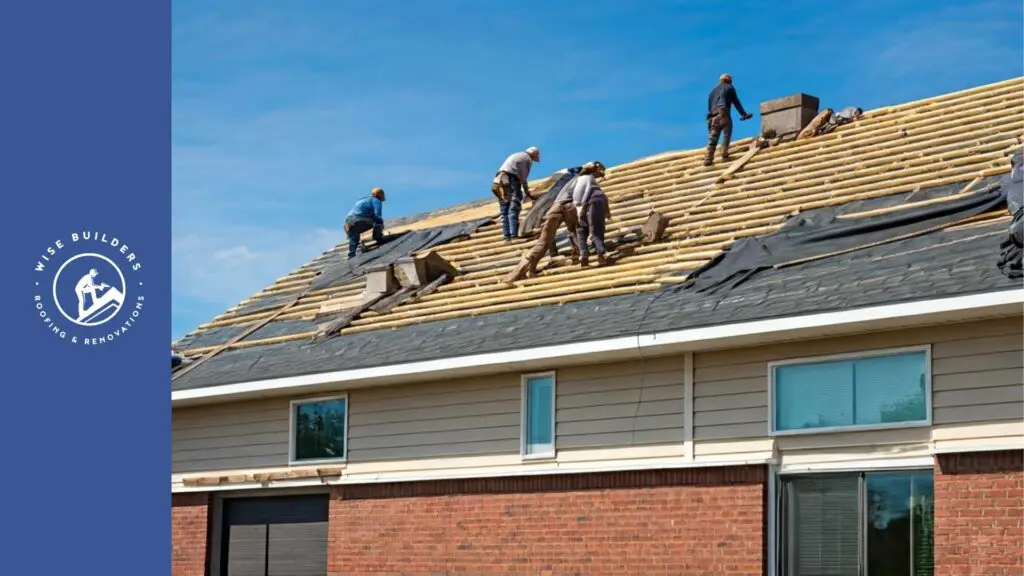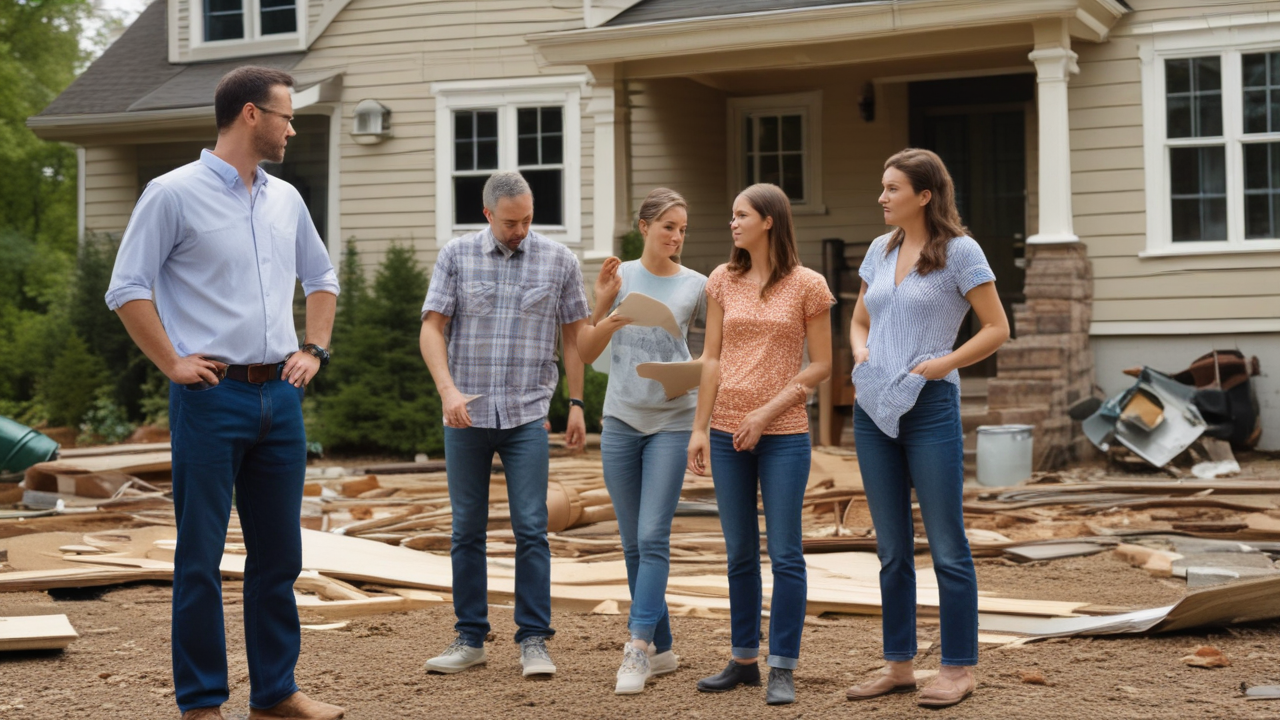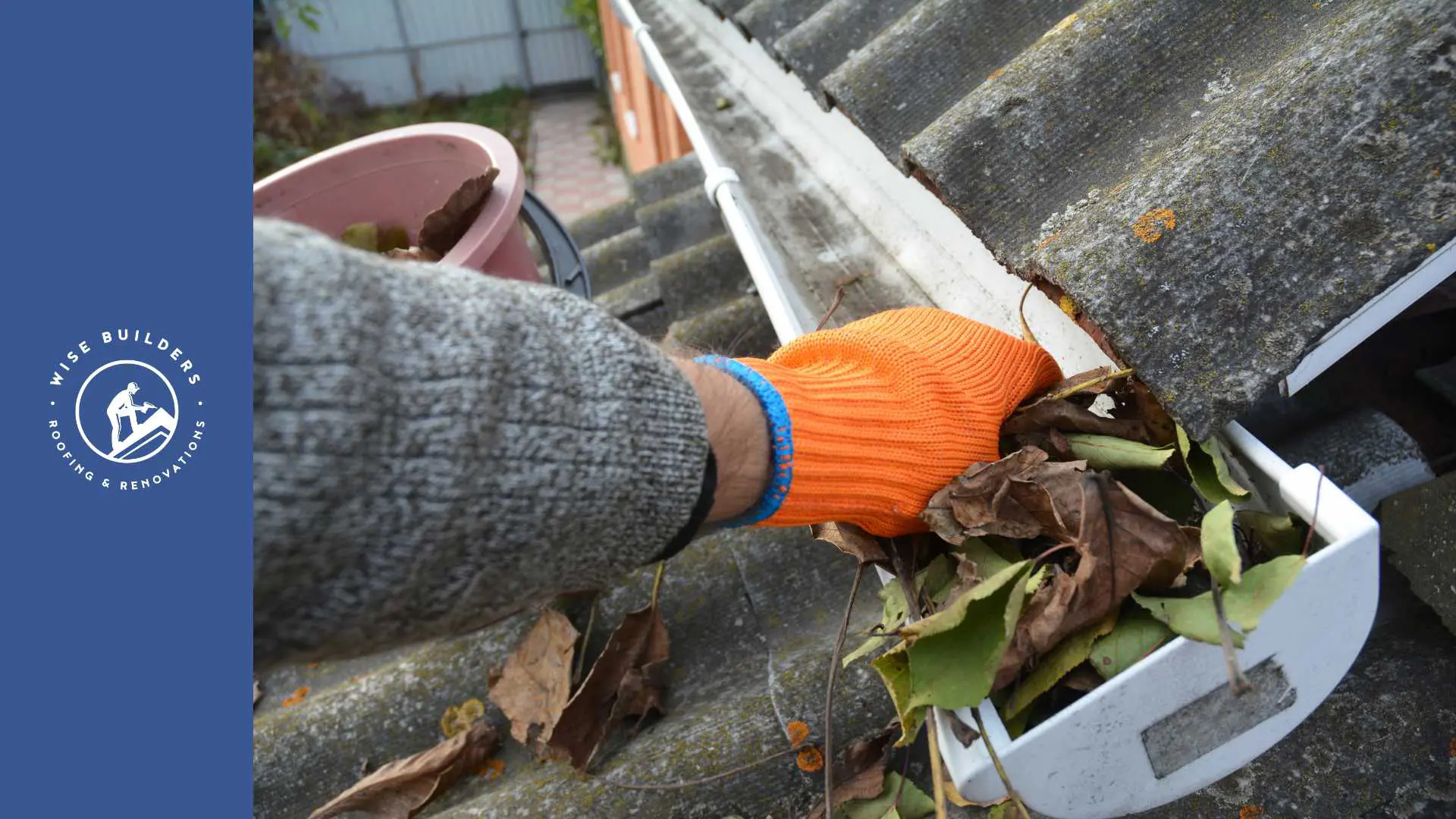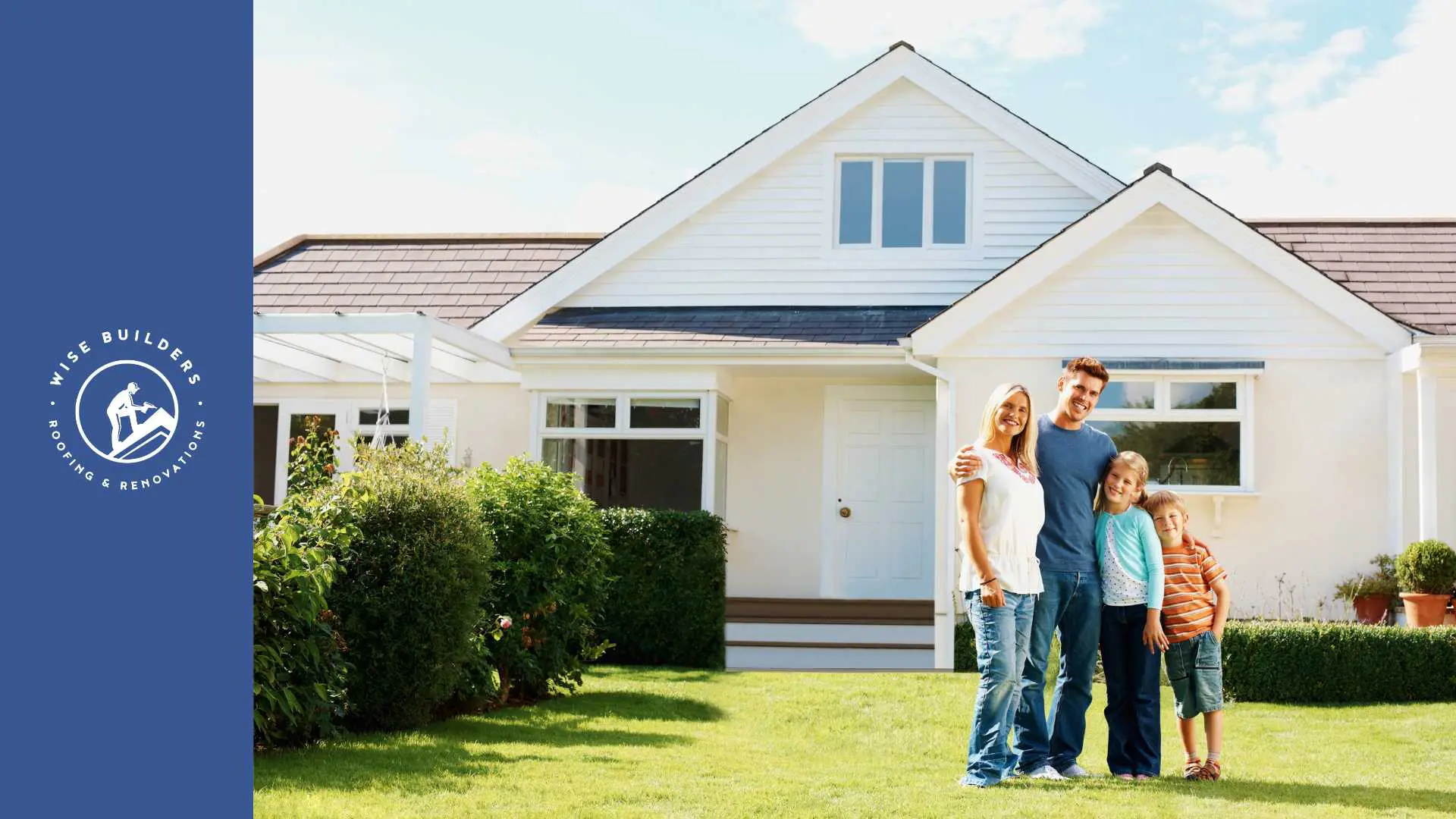
Key Highlights
- Staying home during a roof replacement offers benefits like immediate communication with roofing contractors and real-time oversight of the roofing project.
- Safety can be a concern due to noise, dust, and falling debris during the roof replacement process.
- Understanding the roof replacement timeline is essential for planning around disruptions to daily life.
- Effective preparation, such as securing belongings and protecting outdoor furniture, is crucial for a smooth roof renovation.
- Assessing the pros and cons will help you make the right choice for your peace of mind.
Introduction
Replacing your roof is no small feat—it’s a significant home improvement project. Whether you’ve fallen victim to water damage or the years have caught up with your shingles, making the right decision is key. Should you stay home during a roof replacement, or should you step out? Wise Builders Roofing and Renovations is here to provide clarity with expert insights. Our roofing contractors are committed to ensuring your peace of mind while helping you navigate this important decision with confidence.
Evaluating the Need to Stay Home During Roof Replacement

Deciding whether to stay or leave during your roof replacement depends on several factors. Safety, convenience, and personal preferences all play a role. While staying home allows you to monitor the project and communicate directly with your roofing contractors, it can also disrupt your daily life.
Noise, dust, and limited access to certain parts of your home might make staying home uncomfortable. For families with young children or pets, these disruptions could be greater. Weighing these factors will guide you in making the right choice. Let’s dive deeper.
Safety First: Why Your Presence Matters
Safety takes center stage during any roofing project. With contractors working at great heights, handling heavy materials like shingles and plywood, and generating debris, it’s vital to ensure your household avoids potentially hazardous zones. Staying home allows you to enforce safety protocols, ensuring your family sticks to designated safe areas.
Moreover, your presence offers peace of mind. You can oversee the roofing process, ensuring protective measures like tarps and barriers are properly installed. This not only helps safeguard your belongings but also reduces risks to landscaping.
Lastly, immediate communication with the project team can address safety concerns as they arise. If an unexpected situation unfolds, you’re right there to adapt and ensure everything proceeds smoothly. With safety tackled, let’s explore how communication can enhance this process further.
Communication Ease with Contractors on Site
Being home during a roof replacement enhances communication with your project manager and roofing contractors, streamlining the roofing project. It allows you to address questions about timelines, materials, or unforeseen concerns instantly—no waiting for follow-up calls or emails.
Additionally, clear communication ensures an efficient operation. For instance, if decisions like adjusting the gutter line or choosing a replacement material arise, your input is readily available. Staying engaged with the project manager keeps you informed and in control of key decisions.
It’s also an opportunity to observe the dedication of your roofing company firsthand. Open dialogue promotes trust and makes the overall process less stressful. With the relevance of communication understood, let’s now unpack what happens during the roof replacement process itself.
Understanding the Roof Replacement Process
Knowing what to expect can make your roof replacement journey smoother. The process begins by removing the old roof, replaced by new shingles, plywood, and protective layers. Most roofing companies prioritize safety and efficiency while managing the construction work.
The duration varies depending on the scope of the project. On average, roof replacements take two to seven days. A solid understanding of this process can help you prepare and implement strategies to reduce disruptions to your daily life. Let’s dive into the details.
What Happens During a Roof Replacement?
Roof replacement begins with removing the old roof, which includes stripping away shingles, nails, and sometimes plywood. This stage is noisy and messy, but it’s a crucial step for exposing the roof deck. Any rot or water damage can then be addressed.
Next, the roofing company installs a protective layer, such as underlayment, to shield the deck from moisture. Finally, new shingles, complemented by flashing along the edge of the roof, are added for a polished finish. Materials like tarps are used to protect belongings and landscaping.
Throughout, contractors should follow a detailed and efficient roof replacement process, ensuring both durability and aesthetics. Now, let’s look at the length of time such a project typically takes with the help of a table for clarity.
Timeline of Typical Roof Replacement Projects
Roof replacements don’t last forever, but their timelines can vary based on size, material type, and weather conditions. Here’s a rough guide:
| Factor | Time Estimate |
|---|---|
| Average Residential Roof | 2-7 days |
| Large or Complex Roofs | Up to 10 days or more |
| Weather Delays | Adds 1-2 days, depending on severity |
Coordinating with your project manager ensures that any unexpected issues causing delays, such as rot or additional repairs, are handled promptly. Most roofing companies aim to finish quickly while maintaining high standards.
Understanding this timeline will prepare you for potential disruptions and allow you to adjust your daily routine accordingly. Now, let’s weigh the pros and cons of staying at home during construction.
Pros and Cons of Staying Home

Should you stay home or seek temporary relocation? Each option has its upsides and downsides.
On the positive side, staying home lets you monitor the roofing project closely and make informed decisions in real time. You’re also there to quickly communicate with contractors. However, the inconveniences of dust, noise, and disrupted daily life might wear you down. For families, these factors could be even more stressful.
By weighing these considerations carefully, you’ll find the best choice for your peace of mind. Let’s begin with the advantages.
Advantages of Monitoring the Progress
Being present during the roof replacement offers you the advantage of staying in control. Monitoring the progress means you can make informed decisions as issues arise, whether it’s about material changes or adjustments around the construction zone.
Additionally, it reassures you that your chosen roofing contractors are delivering quality workmanship. Spot-checking their dedication and addressing questions about the roof replacement process enhances collaboration.
Lastly, being home helps ensure the safety of your property and loved ones. You can secure areas of concern, confirm that tarps are in place, and check the proximity of contractors to fragile landscaping or belongings. However, living through construction comes with its own challenges, which we’ll discuss next.
Challenges of Living Through Construction
Roof replacements can disrupt your daily life. The hammering, vibrations, and dust generated during construction can make staying home less than ideal. Noise can interfere with work-from-home schedules, children’s homework, or simply trying to relax.
Debris and dust often create additional cleanup tasks, even when tarps are used. And while roofing professionals patrol for stray nails, homeowners must remain vigilant to prevent mishaps. Navigating around restricted areas increases the risk of accidents or discomfort.
For some, the stress of maintaining daily routines amid construction can outweigh the benefits of staying home. Temporary relocation could provide the peace and calm you truly need. If staying put is unavoidable, let’s explore preparation strategies next.
How to Prepare if You Choose to Stay
Preparation is key to surviving a roof replacement while staying home. Begin by safeguarding your valuables inside and moving outdoor furniture to safer spots to prevent damage. Communication with your roofing contractors ensures safety measures, such as tarps or protective barriers, are in place.
The noise, dust, and interruptions will need thoughtful strategies to minimize disruptions to daily life. Planning your schedule around construction phases can make the process smoother. Let’s break these preparation steps into actionable advice below.
Securing Personal Belongings and Valuables
Protecting your belongings is a top priority during a roofing project. Vibrations from work on the roof can dislodge items, so secure fragile decor, heirlooms, and art pieces. Store these in closed-off rooms or boxes for added safety.
Using tarps indoors to cover furniture and electronics prevents finer dust particles from settling. Also, ask your roofing company to ensure pathways inside the house remain free of debris. This safeguards your belongings and keeps your peace of mind intact.
Lightweight outdoor items, like grills and potted plants, should be moved inside or covered with heavy-duty tarps. With valuables secured, let’s explore strategies for easing disruptions caused by construction work.
Strategies for Minimizing Disruption in Daily Life
Adapt your routine to the roofing project by identifying strategies that minimize disruption. For instance, plan errands or outdoor activities during peak construction hours. This keeps you out of the chaos while work progresses.
Separating living quarters from construction zones with tarps or barriers helps isolate noise and dust. Families with young children should prioritize indoor activities in safe rooms to mitigate their exposure during the roof replacement process.
For remote work, consider noise-canceling headphones or temporary relocation to quieter spaces like libraries or coworking cafes. Strategically managing your daily life ensures the project becomes manageable for you and your household. Let’s conclude this guide.
Conclusion
In conclusion, deciding whether to stay home during a roof replacement involves weighing the pros and cons. While being present can enhance communication with your contractors and allow you to monitor progress, it also comes with challenges such as noise and disruption. Preparing adequately can help you navigate the process smoother and protect your belongings. At Wise Builders, we prioritize quality workmanship and customer satisfaction, ensuring that your roofing project is completed efficiently. If you want to discuss how we can assist you with your roofing needs, get in touch with us today for a consultation!
Frequently Asked Questions
Is it safe to stay in the house during roof replacement?
Yes, it can be safe to stay in your home during a roof replacement, but precautions are necessary. Communicate safety guidelines with your roofing contractors, cordon off construction zones, and ensure family members understand these measures for peace of mind.
How can I minimize dust and debris inside the house?
To minimize dust and debris, cover furniture, electronics, and other belongings with tarps. Ask your roofing contractors about protective measures like sealing vents. Regularly clean surfaces and consider using air purifiers to maintain indoor air quality during the project.
What should I communicate to the roofing contractor if I decide to stay?
Let your roofing contractor know your concerns about noise, safety, and debris if you decide to stay. Discuss project specifics with the project manager, including timelines, restricted zones, and protective measures. Having open communication ensures an informed decision throughout the roof replacement.








